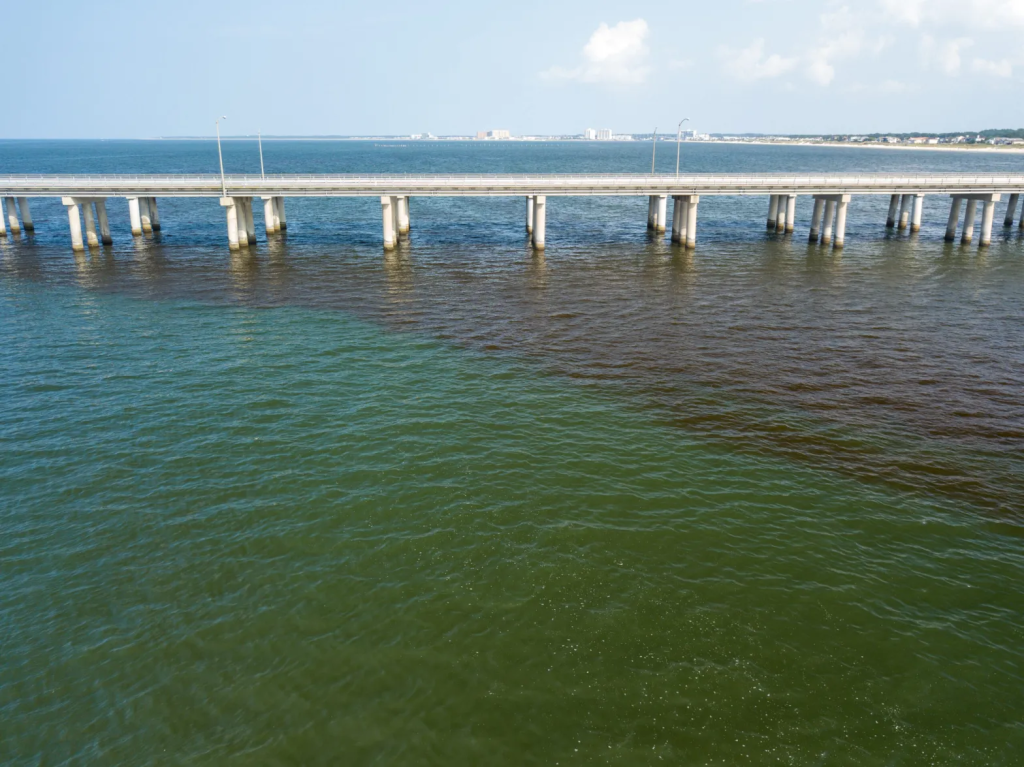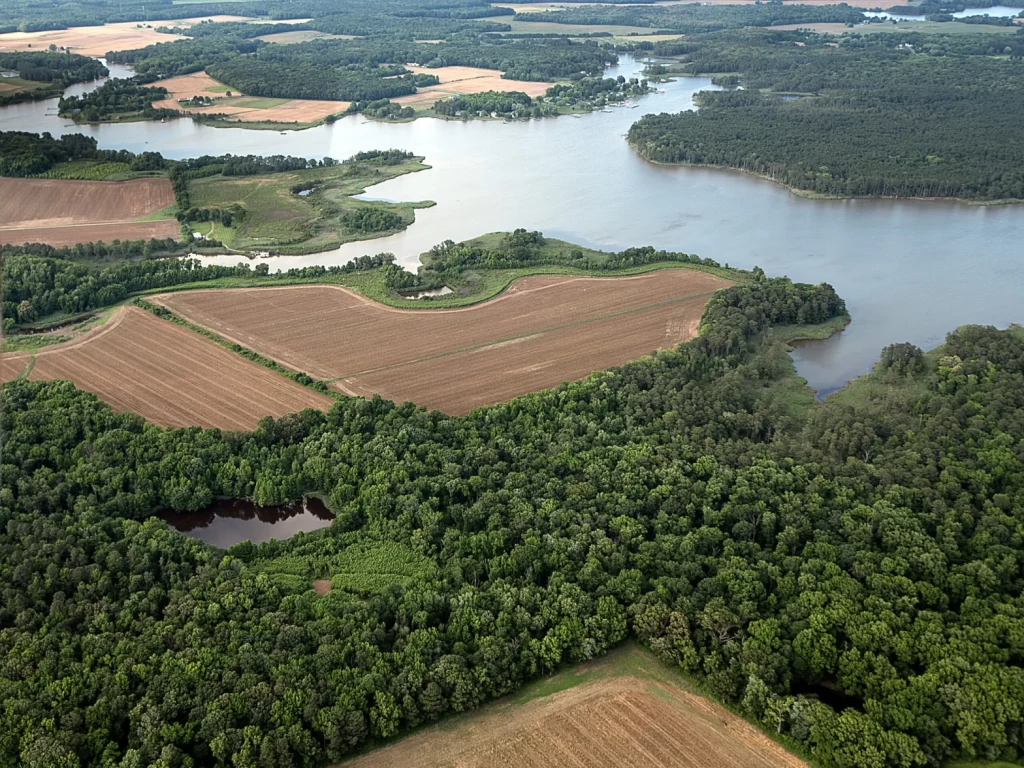Farm to Trouble, Part 4 of 5 — Could the Mississippi River benefit from Chesapeake Bay’s strategy to improve water quality?
This story is the fourth in a five-part series being shared by MSSC with permission called “Farm to Trouble,” a collaborative investigative reporting effort led by AG & Water Desk. The series takes a deep dive into the slow progress to reduce the polluted runoff from agriculture and other industries into the Mississippi River. This runoff from 31 states flows into the Gulf of Mexico and has created a “dead zone” off of Louisiana’s western coast and threatens to make the Mississippi Sound a dead zone in the future.
By Bennet Goldstein, Wisconsin Watch, June 18, 2024

HAVRE DE GRACE, Md. — As environmental groups and policy analysts in the Mississippi River basin seek solutions to shrink a massive “dead zone” that forms off the coast of Louisiana each year, they have looked to a regional clean-up program in the Chesapeake Bay as a model.
A key component of that effort, known as the Chesapeake Bay Program, is regulation.
For nearly 15 years, it’s included a legally enforceable, multi-state pollution quota — one of a select few in the nation. This “total maximum daily load” aims to reduce the amount of nutrients, like phosphorus and nitrogen, that run off into the Bay’s waters.
Too much of chemicals that derive from these elements, commonly used to grow crops and fertilize lawns, can cause algae blooms and die-offs that rob waters of oxygen and suffocate aquatic life.
But the Bay program’s scientific advisors recently noted the strategy is imperfect.
After two missed deadlines to reduce nutrient runoff, and a third looming, Mid-Atlantic state and federal officials are reevaluating their option.
A unique legal agreement

In 1983, the Maryland, Pennsylvania and Virginia governors along with the mayor of Washington and administrator of the U.S. Environmental Protection Agency signed the Chesapeake Bay Agreement, a pledge to reduce the pollutants and sediment entering the Bay that contribute to the loss of organisms like seagrasses, shellfish and waterfowl.
The tapering of nitrogen and phosphorus remained the focus of subsequent agreements, but the jurisdictions did not meet their goals voluntarily, so in 2010 the EPA created the country’s most expansive pollution quota. It applied to six states — Delaware, Maryland, New York, Pennsylvania, Virginia and West Virginia — and the District of Columbia.
The quota’s creation and enforcement took political arm-twisting, including an act of Congress, a presidential executive order and multiple lawsuits. It requires nutrient plans from each jurisdiction and “reasonable assurances” each will take steps to control pollution from “nonpoint sources” like farm fields and parking lots.
If states fail to meet their obligations by set deadlines, the EPA can implement stricter limits, force unregulated polluters to get permits, and redirect or condition grant money.
Signatories believed they would achieve the program’s primary goal — improving habitat for the Bay’s aquatic life — if they capped nitrogen and phosphorus entering the Chesapeake each year at 214.9 million and 13.3 million pounds, respectively, and sediment at 18,587 million pounds per year.
Instead, scientific modeling estimated that 258 million pounds of nitrogen and 15 million pounds of phosphorus entered the Bay in 2021, a reduction from previous years thanks to upgrades to wastewater treatment plants and lower airborne emissions, but still off the mark. The program did hit its sediment target.
The Bay program’s advisors say those declines represent achievements. Without the nitrogen and phosphorus reductions, things could be a lot worse as the region’s waters warm, urban population grows and agriculture expands. The Bay’s 1-cubic-mile dead zone also might be even larger.
Nonetheless, the sluggish progress remains an inconvenient truth. Officials have concluded they will not meet a 2025 deadline to stem the flow of nutrients after failing to achieve benchmarks set for 2000 and 2010.
“At the rate we’re going, it’s going to take about 150 years,” said Denice Wardrop, a Bay program science advisor who directs the Chesapeake Research Consortium. “We better learn how to do it better.”
The program offers lessons for the Mississippi River basin too.
“Farm to Trouble” Credits:
Contributing reporters & news outlets: Erin Jordan, The Gazette (Iowa); Delaney Dryfoos, The Lens (New Orleans); Madeline Heim, Milwaukee Journal Sentinel; Bennet Goldstein, Wisconsin Watch; Eric Schmid, St. Louis Public Radio; Joy Mazur, Columbia Missourian (Missouri); and Connor Giffin, Louisville Courier Journal (Kentucky).
Lead editors: Tegan Wendland, Ag & Water Desk; Erin Jordan, The Gazette; Kelly McEvers, host of NPR’s Embedded podcast
Data visualizations: Jared Whalen, data journalist, Ag & Water Desk
The Ag & Water Desk receives major funding from the Walton Family Foundation, which also funds many organizations within our region. The Desk retains full editorial independence. Please contact info@agwaterdesk.org with any questions.
Organizations referenced in this series that have also received Walton funding: Ducks Unlimited, Tulane University, Gulf Restoration Network, The Nature Conservancy, Louisiana Department of Agriculture and Forestry, University of Iowa, University of Minnesota, Minnesota Center for Environmental Advocacy, Iowa Environmental Council, Practical Farmers of Iowa, Precision Conservation Management, and Lighthawk.